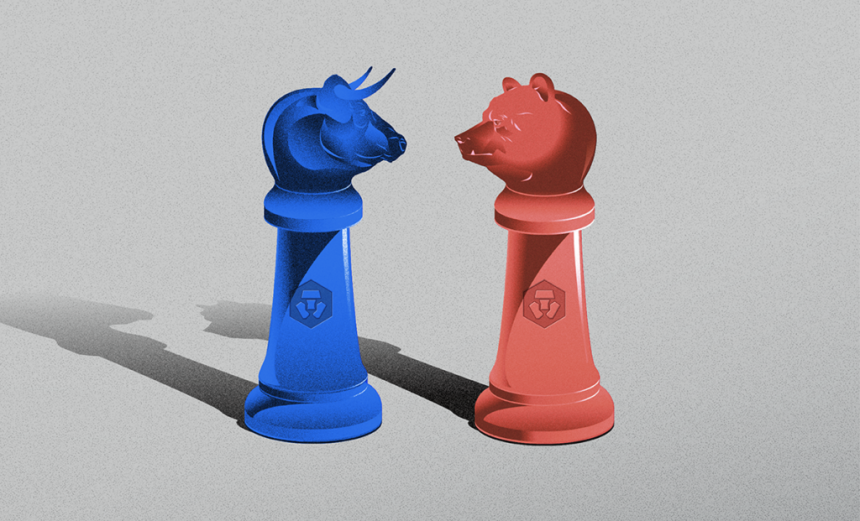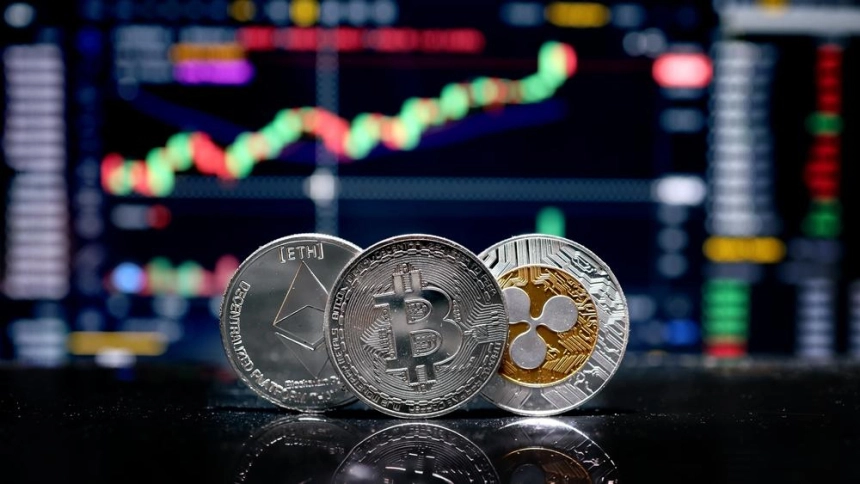TokenPost
Hello. This is the TokenPost podcast. Today, we will delve into the research material from Crypto.com posted on the TokenPost website on July 2nd. The topic is exactly that. Bull and bear markets, often referred to as bullish and bearish markets. If you invest in cryptocurrencies or stocks, you've probably heard a lot about bulls and bears. But what exactly does this mean? Why bulls and bears? And how should we respond in each situation? Aren't you curious? Today, through this research material, we'll examine the differences, characteristics, and strategies. Let's start with the bull market first. It's quite a famous story that it comes from the image of a bull dramatically lifting the ball from bottom to top
Host
Yes. Technically, it refers to a market situation where asset prices are steadily rising or there is a very high expectation that they will continue to rise. It's not just about prices rising, but underlying this is investors' overall optimism and trust in the market. In this research, the background driving a bull market is usually when macroeconomic indicators are good. For example, when GDP growth is clear, employment is high, and interest rates are low, investment sentiment becomes vibrant. This analysis suggests it's easy to lead to buying pressure.
TokenPost
Ah, I see. Ultimately, when there's a warm wind across the economy, people's financial situations improve, the desire to invest emerges, and when demand exceeds supply, prices rise - it's a somewhat simple principle. The research also suggests that mainstream media beginning to show interest can be a signal. 2017 cryptocurrency market is mentioned as a typical example. At the beginning of the year, Bitcoin was around 900 dollars, but by the end of the year, it had reached almost 19,000 dollars. Wow, it was a truly massive rise.
Host
That's right. But Ethereum was even more dramatic. It was actually around 8 dollars at the beginning of the year. By the end of the year, it had reached around 750 dollars. If you calculate, the increase was over 9,200%. It's a representative example showing what a bull market really is.
TokenPost
However, no market only goes up. So now we should talk about the bear market. This is said to be derived from the image of a bear striking downward with its front paws.
Host
That's correct. Generally, in the market, if asset prices fall more than 20% from recent highs, it's considered entering a bear market. Incidentally, a decline of about 10% is usually called a correction market. Looking at past data, in bear markets, prices have often fallen an average of 30% to 40%. At this time, pessimistic outlooks spread across the market, and investor confidence weakens. According to the research, bear markets often come with economic recession signals. However, it's not always the case. Unexpected external shocks like the COVID-19 pandemic or deteriorating economic fundamentals such as sudden inflation, sharp increases in unemployment, or interest rate hikes can be direct causes.
TokenPost
When the situation becomes unstable, investors naturally tend to move towards safer assets like gold or government bonds. Naturally, more people will sell. As the research suggests, at this time, the psychology shifts from making large profits to simply protecting one's money.
Host
That's right. And such movements can trigger more selling by others, creating a vicious cycle where the decline becomes larger. It's a situation where supply exceeds demand.
TokenPost
The year following that hot 2017, which is 2018, emerges as an example of a bear market. Bitcoin's peak in January was around 17,500 dollars, but by the end of the year, it had dramatically dropped to around 3,200 dollars.
Host
Yes, Ethereum was similar. Its peak was around 13,800 dollars, but by the end of the year, it had significantly dropped to around 116 dollars. The research analyzes this situation as a result of early investors massively realizing profits and insufficient new demand.
TokenPost
I see. So in these completely opposite market situations, how should investors like us approach them? In a bull market, it might be advantageous to quickly grasp the trend and buy relatively early. However, as the data points out, since the mood can change quickly, it's necessary to manage risk by appropriately realizing profits or reducing positions. Especially for high-volatility new projects, we need to be more cautious.
Host
On the other hand, a bear market is a tough period. But if we change our perspective, it could be an opportunity to buy good assets cheaply in preparation for the next bull market. However, predicting exactly where the bottom is is almost impossible. So we must be cautious about entering hastily as prices might fall further. Therefore, this research suggests long-term investment strategies like dollar-cost averaging (DCA), consistently buying in portions, or simply waiting until the market stabilizes.
TokenPost
Of course, the market isn't always strictly divided into bull or bear markets. Right?
Host
Ah, that's right. This is a very important point. Between rising and falling, there are often neutral phases where supply and demand reach a certain balance without a clear direction. During such periods, price fluctuations tend to be smaller, and investors usually wait for clearer signals. The key point this research emphasizes seems to be that attempting to precisely predict the market's highest or lowest points is almost impossible. More importantly, it's about understanding that markets have cycles of strength and weakness that continue to repeat. This is not an exception for the cryptocurrency market.
TokenPost
Ultimately, rather than being swayed by emotions and buying and selling impulsively, it seems important to establish your own investment principles from a long-term perspective, consistently study, update information, and if necessary, refer to expert advice while calmly navigating through the market's various stages. Perhaps, instead of trying to precisely time the market, having your own principles and wisely passing through this cycle could be a more realistic and valuable approach. Well, while looking at this research, I thought of one more point to consider. Even if past cycles were relatively clear, recently, institutional investors are entering the market, and new variables like DeFi keep emerging.
Host
Yes, that's right.
TokenPost
So, might future bull or bear markets potentially show different patterns from the past? This seems to be an interesting question we should continue to pay attention to. This concludes the TokenPost podcast.






